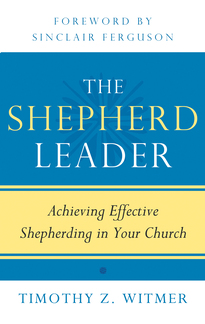Here is an excerpt taken from The Shepherd Leader: Achieving Effective Shepherding in Your Church by Timothy Z. Witmer.
The Lord’s self-revelation as “shepherd” of his people is not merely a metaphor with which his people could clearly relate, but it is one that describes the comprehensive care that he provides for his people. Again, this is clearly seen in Psalm 23, where the Lord’s care for his people leads to the superlative expression of gratitude and praise from his people, “I shall not want.” Nothing is lacking in the care provided for the flock. Not only does he feed them, but he also leads them and protects them.
The reassurance of his faithfulness is given to them even when they are straying. Isaiah writes, “He tends his flock like a shepherd: He gathers the lambs in his arms and carries them close to his heart; he gently leads those that have young” (Isa. 40:11 NIV). When the work of shepherding is difficult, the commitment of the shepherd is truly revealed. Yet shepherding is a labor of love to the one who truly is a shepherd.
The shepherding metaphor is not only comprehensive with respect to the nature of the care received but also with respect to the extent. This is one important distinction between the metaphor of father and that of shepherd. Children grow up and become less dependent on their earthly fathers, though the relationship continues. Sheep, on the other hand, are always completely dependent on their shepherd. They never outgrow their need for the shepherd to care for them, feed them, lead them, and protect them. The shepherd cares for the newborn lambs and is still there when the sheep grow old and weak. Therefore, the imagery of shepherd-sheep captures the comprehensive sovereignty of the shepherd over the sheep and the need of the sheep to yield completely to his care. The good news is that the Lord uses his sovereign power for the well-being of his flock.
Excerpt taken from page 13 of The Shepherd Leader: Achieving Effective Shepherding in Your Church by Timothy Z. Witmer, copyright 2010, P&R Publishing.


Comments